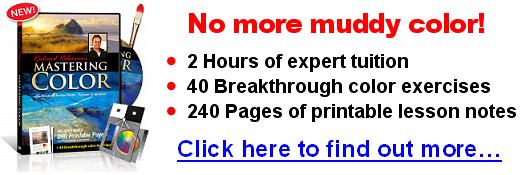Photography Painting Lessons(Scroll down to see the full list of lessons in this section)
Portraits and landscapes are challenging and exciting to paint. Unfortunately, not every artist has the time to paint from life, and this is where photographs come in handy when you are learning how to oil paint on canvas. Sometimes, painting from a photograph too directly can result in copyright issues. Always be sure that you have a photographer’s permission when copying from their work. Remember, there’s a difference between derivative use of a photograph, and reference use. The easiest way to avoid issues is to take your own photos. Learn to take good photographs! It’s never a bad idea to take a few lessons in digital photography. Practice a lot, read books and articles on the subject and don’t be afraid to ask friends and family for tips and lessons, if they have expertise that you do not. Always be sure to use good pictures. You want to focus on good lighting, color schemes and tonal relationships. If you’re taking the photographs yourself, avoid using flash as it tends to flush out tonal contrasts – light your subject well using other means rather than resorting to using a flash. Take photos of your subject from multiple angles, distances and with different lighting options. This will help you to get a complete image of your subject and is particularly useful for portraits and landscapes. Don’t only take photos of your subject. Make as many sketches as possible in the time that you have, as well. Write notes about the colors, values and temperatures, describing as much as you can about the subject. Really try to capture the essence and spirit of your subject. Before you start sketching or painting onto your canvas, crop your photos. You wouldn’t want to realize half way through that your photo doesn’t fit the shape of your canvas. That isn’t all that cropping is useful for, though. Cropping helps you to decide what you want to focus on in your painting, and where on the canvas you should place the focus. Don’t let your painting look like a bad collage! If you’re using different elements from different photos and pictures, be careful not to have shadows that don’t make sense. Unify different elements by paying attention to angles, light source/direction and shadows, color temperature, scale (usually, forks aren’t bigger than chairs) and value relationships. Of course, there are tons of oil painting techniques that you can implement to get the desired effect on your painting. If you want a flat, dead look in your painting then copy photos exactly as you see them. Otherwise, use the photos as an aid for drawing the general shape, and for tone, colors and value relationships and then use your artistic license to fill in the rest of the details. Remember that colors often don’t come out as brilliantly in photos as you see them in the real world, so it’s important to add colors to your painting that you can’t see in the photos. If you’re having a hard time figuring out what colors are missing, edit your photos in Photoshop, Picassa or GIMP to get some ideas about what to add and what to take away. Lighten up shadows and darken highlights while painting from photos. Never paint shadows black, even if they look black in the photos: if the lighting source is warm, paint shadows using cool colors such as blue, green or violet. If the lighting source is cold, then use warm colors for shadows. Always make the shadows lighter and more transparent than they look in photos.
List of Photography Painting Lessons And Tips:
Photography Painting Lessons | Learn Oil Painting From Photographs | ||
|


Master the Colours DVD...

|
Although every attempt has been made to make information as accurate as possible, we are not responsible for any errors that may appear.
© Copyright 2015, OilPaintingTechniquesLessons.com. All Rights Reserved.






